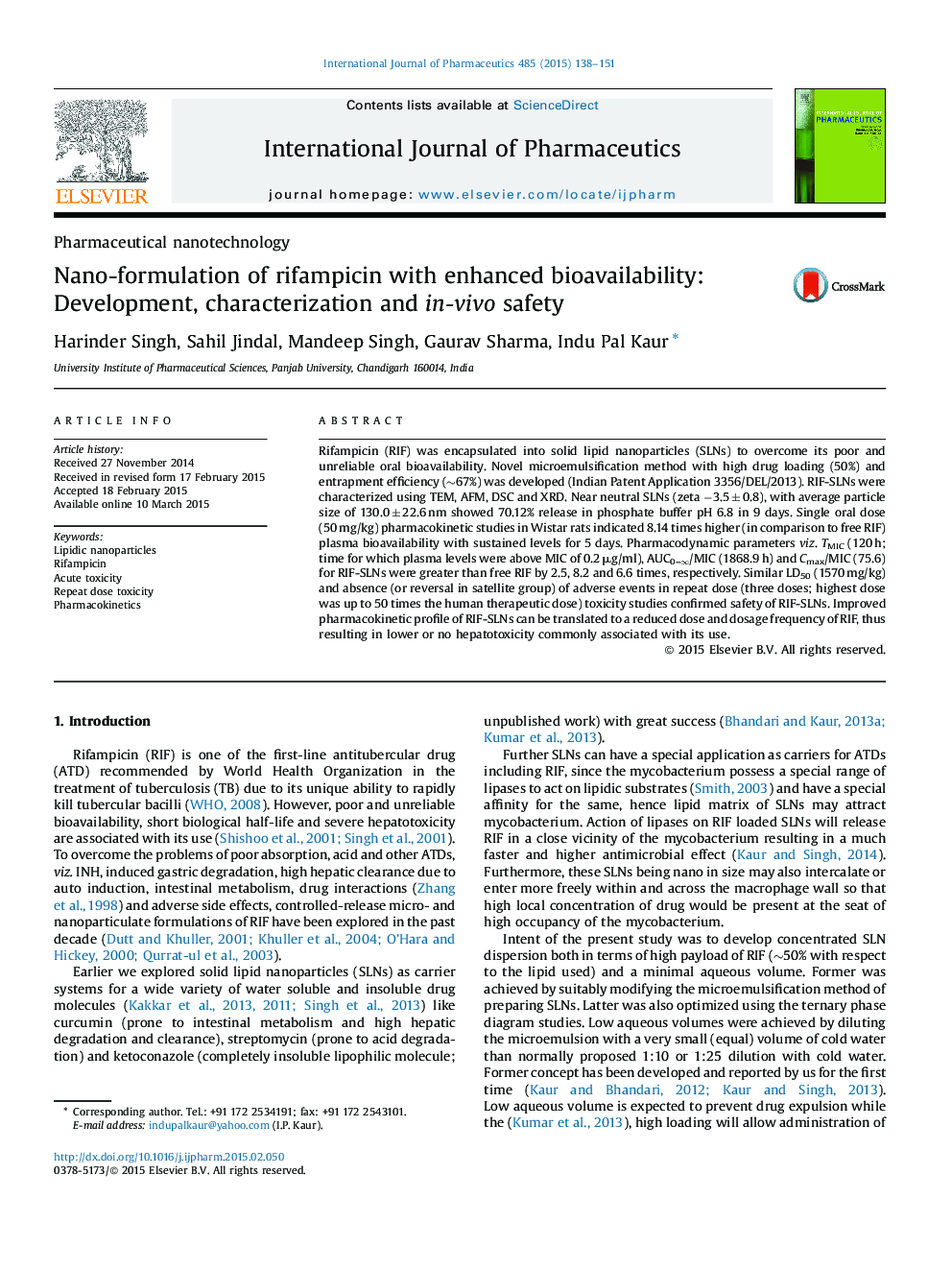| Article ID | Journal | Published Year | Pages | File Type |
|---|---|---|---|---|
| 2501470 | International Journal of Pharmaceutics | 2015 | 14 Pages |
Rifampicin (RIF) was encapsulated into solid lipid nanoparticles (SLNs) to overcome its poor and unreliable oral bioavailability. Novel microemulsification method with high drug loading (50%) and entrapment efficiency (∼67%) was developed (Indian Patent Application 3356/DEL/2013). RIF-SLNs were characterized using TEM, AFM, DSC and XRD. Near neutral SLNs (zeta −3.5 ± 0.8), with average particle size of 130.0 ± 22.6 nm showed 70.12% release in phosphate buffer pH 6.8 in 9 days. Single oral dose (50 mg/kg) pharmacokinetic studies in Wistar rats indicated 8.14 times higher (in comparison to free RIF) plasma bioavailability with sustained levels for 5 days. Pharmacodynamic parameters viz. TMIC (120 h; time for which plasma levels were above MIC of 0.2 μg/ml), AUC0–∞/MIC (1868.9 h) and Cmax/MIC (75.6) for RIF-SLNs were greater than free RIF by 2.5, 8.2 and 6.6 times, respectively. Similar LD50 (1570 mg/kg) and absence (or reversal in satellite group) of adverse events in repeat dose (three doses; highest dose was up to 50 times the human therapeutic dose) toxicity studies confirmed safety of RIF-SLNs. Improved pharmacokinetic profile of RIF-SLNs can be translated to a reduced dose and dosage frequency of RIF, thus resulting in lower or no hepatotoxicity commonly associated with its use.
Graphical abstractFigure optionsDownload full-size imageDownload high-quality image (107 K)Download as PowerPoint slideNovel lipidic nanocarrier system of RIF with high drug loading of 50%, enhanced bioavailability and prolonged release.RIF-SLNs can be translated to reduced dose, dosage frequency and reduced side effects.
